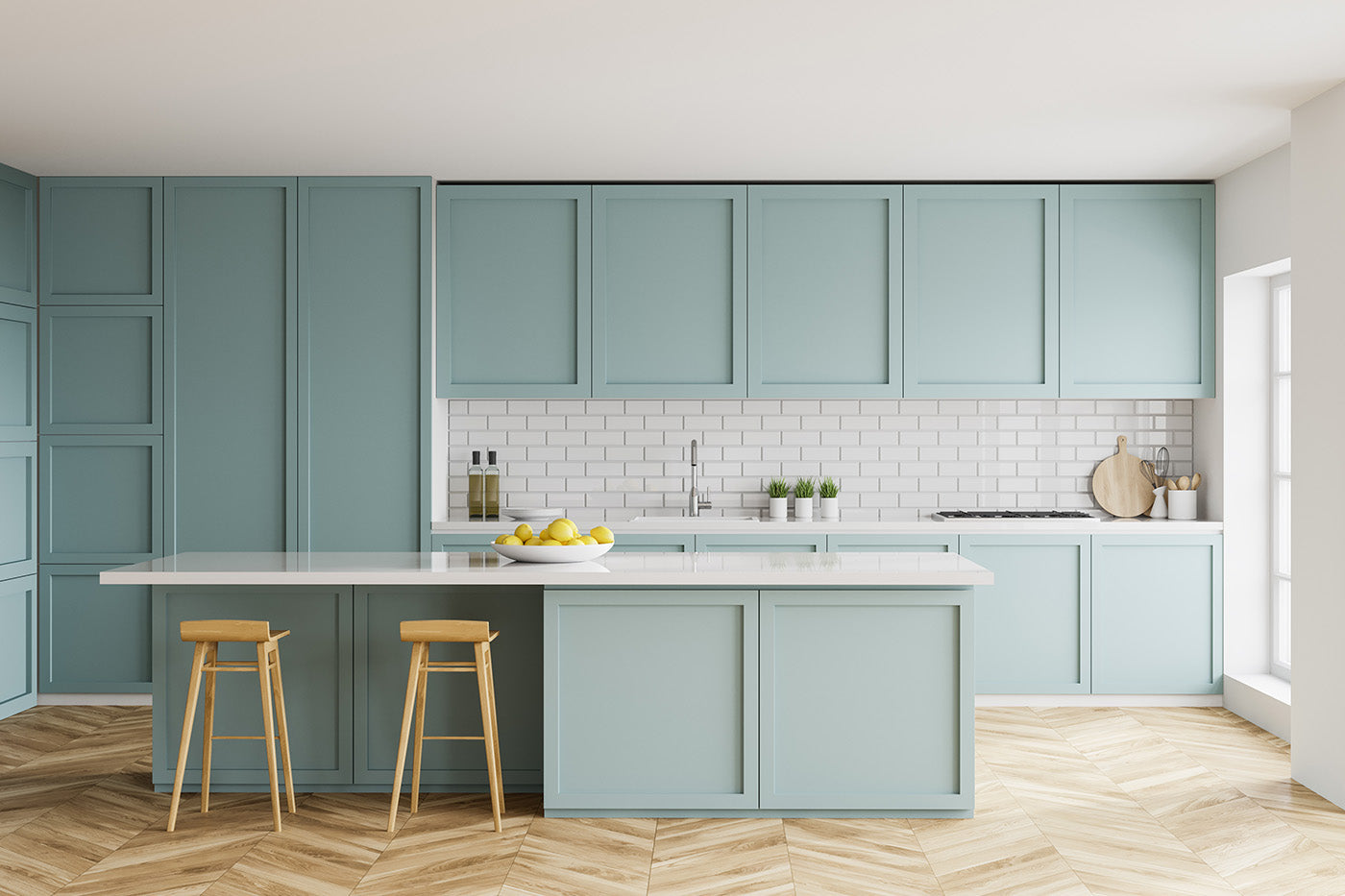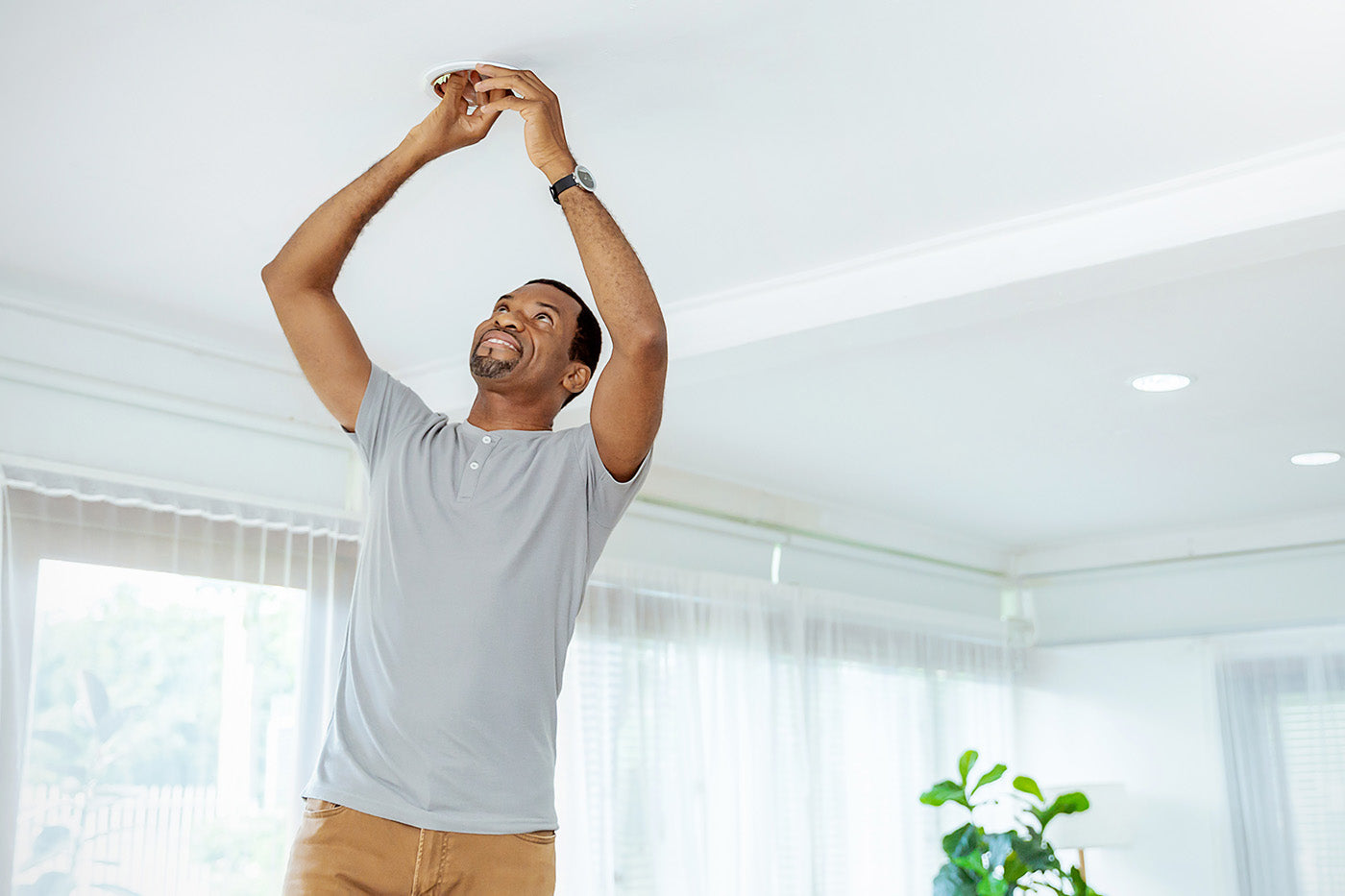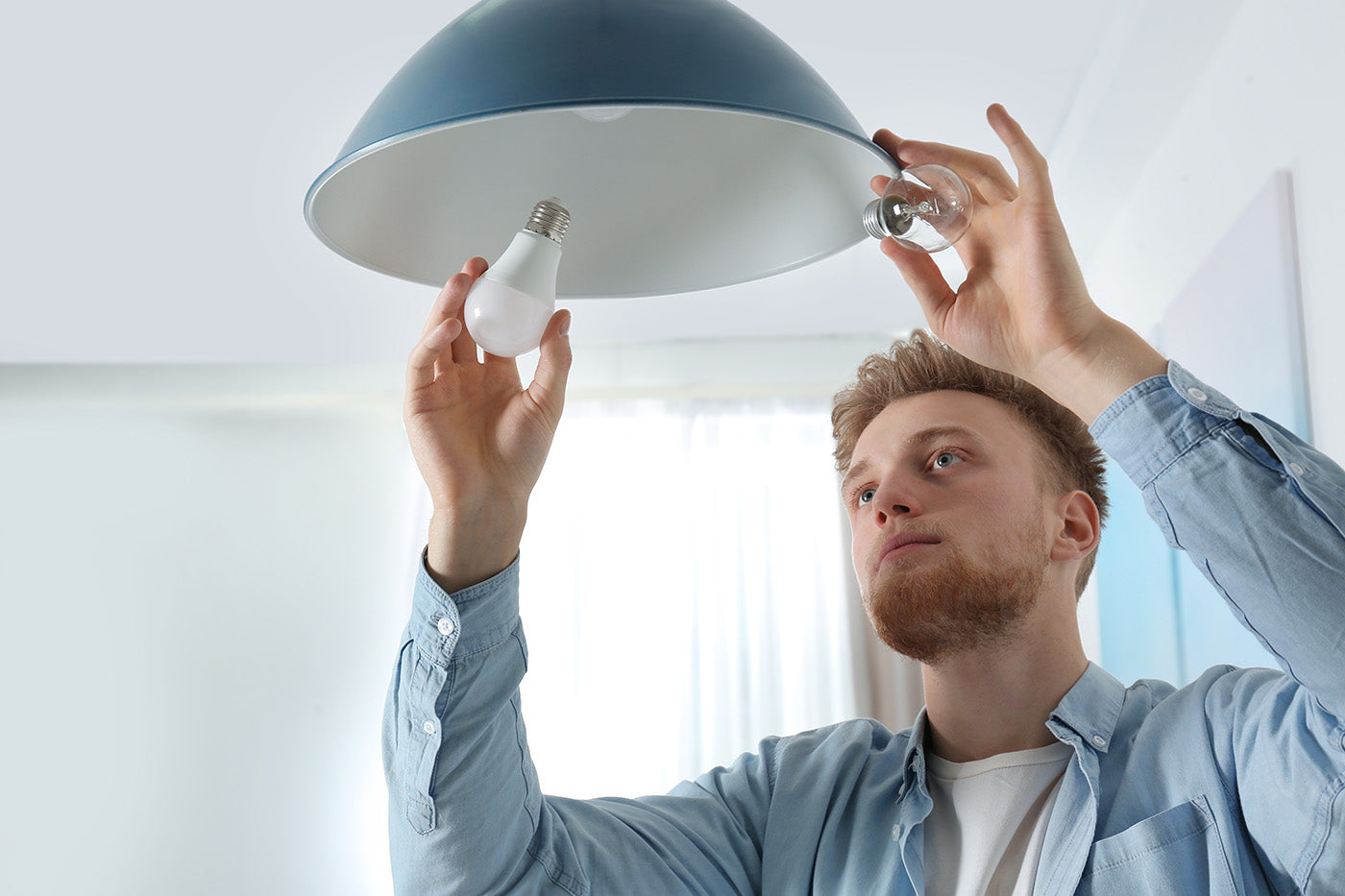When it comes to kitchen design, lighting is essential — it dictates functionality, ambiance, and aesthetic appeal.
Among the many lighting options available, recessed lighting stands out for its versatility and sleek design, offering an unobtrusive yet highly effective solution for illuminating kitchen spaces. We’ll discuss seamlessly adding this popular modern lighting into your kitchen, providing insights and practical tips to help you achieve the perfect balance of form and function.
At LUSA, we understand the importance of lighting in enhancing everyday living spaces. With our expertise in premium lighting solutions, we're committed to bringing high-end designer lighting into the homes of average homeowners.
What Is Recessed Lighting?
Recessed lighting, often referred to as can lights or downlights, is a type of lighting fixture that is installed flush with the ceiling or wall surface, creating a clean and minimalist look. Consisting of a housing unit, trim, and light bulb or light module, recessed lights offer several advantages over traditional lighting fixtures.
One of the key benefits of recessed lighting is its versatility. Unlike pendant lights or chandeliers, which can be visually imposing and limit design flexibility, recessed lights blend seamlessly into the ceiling, allowing for greater freedom in arranging furniture and decor. This makes them an ideal choice for kitchens, where space optimization is key.
Besides their aesthetic appeal, recessed lights provide excellent illumination for various kitchen tasks. Whether you're chopping vegetables, reading recipes, or entertaining guests, premium recessed LED lighting can be strategically placed to ensure optimal visibility without creating harsh shadows or glare.
Recessed lighting is also known for its energy efficiency and longevity. By utilizing LED technology, recessed lights consume less energy than traditional incandescent bulbs, resulting in lower utility bills and reduced environmental impact. Additionally, LED bulbs have a much longer lifespan, meaning less frequent bulb replacements and maintenance.
How Can You Take Your Kitchen Layout Into Account?
When it comes to placing recessed lighting in your kitchen, understanding your kitchen's layout and functionality is essential. Every kitchen is unique, with different layouts and features that influence lighting requirements.
Here's how to assess your kitchen to determine the optimal placement of recessed lighting:
- Evaluate Kitchen Configurations: Start by analyzing your kitchen's layout, considering factors such as size, shape, and traffic flow. Common kitchen configurations include galley, L-shaped, U-shaped, and open-concept kitchens. Each layout may have specific lighting needs based on its dimensions and features.
- Identify Task Areas: Identify key task areas in your kitchen where focused lighting is essential. These may include the countertops, sink area, stove, and food preparation zones. Task lighting ensures adequate illumination for cooking, cleaning, and other kitchen activities.
- Consider Ambient Lighting: In addition to task lighting, consider the need for ambient lighting to provide overall illumination throughout the kitchen. Ambient lighting creates a comfortable and inviting atmosphere, enhancing visibility and reducing shadows.
- Think About Accent Lighting: Accent lighting can add visual interest and highlight architectural features or decorative elements in the kitchen, such as artwork, shelving, or cabinetry. Consider incorporating accent lighting to create depth and dimension in your kitchen design.
By carefully assessing your kitchen layout and functionality, you can identify areas that require specific types of lighting and plan accordingly to achieve a well-lit and functional kitchen space.
How To Plan Recessed Lighting Placement
Once you've assessed your kitchen's layout and lighting needs, it's time to plan the placement of your recessed lighting. Proper planning ensures balanced illumination and avoids common pitfalls such as glare and uneven lighting distribution.
Follow these steps to plan your recessed lighting placement effectively:
- Determine Ceiling Height: Consider the height of your kitchen ceiling when planning recessed lighting placement. Ceiling height can impact the spacing and positioning of recessed lights to achieve optimal coverage and illumination.
- Calculate Fixture Spacing: Calculate the spacing between recessed lighting fixtures to ensure uniform illumination across the kitchen area. As a general rule of thumb, quality fixtures can be spaced approximately six to seven feet apart for standard ceiling heights. Using lower-quality fixtures may produce uneven lighting distribution and should be placed four to six feet apart.
- Choose the Right Beam Angle: Select recessed lighting fixtures with the appropriate beam angle to suit your kitchen's layout and lighting requirements. Narrow beam angles are ideal for task lighting, while wider beam angles are great for general illumination.
- Consider Lighting Zones: Divide your kitchen into lighting zones based on functionality and lighting needs. For example, separate task areas, such as the cooking zone and the dining area, may require different types of lighting to accommodate specific tasks and activities.
- Avoid Glare and Shadows: Select lighting fixtures with the light source regressed into the fixture — a light source level with the ceiling will create a lot of glare. Recessed lighting fixtures can also be positioned to minimize glare and shadows, especially in areas where tasks are performed. Aim adjustable lights away from reflective surfaces and consider using adjustable trim options, if available, to direct light where needed most.
By carefully planning the placement of your recessed lighting, you can create a well-lit and visually appealing kitchen environment that enhances functionality and aesthetics.
What Are Some Practical Tips for Installation?
Installing recessed lighting in your kitchen can be simple with the right tools and knowledge. Here are some practical tips to help you navigate the installation process smoothly:
-
Gather Necessary Tools and Materials: Before you begin, make sure you have all the tools and materials you'll need for the installation, including recessed lighting fixtures, electrical wiring, wire strippers, a stud finder, a ladder, and safety gear such as gloves and safety goggles.
-
Turn Off Power: Safety should always be a priority when working with electricity. Before you start installing recessed lighting, turn off the power to the circuit you'll be working on at the breaker box to avoid the risk of electrical shock.
-
Locate Ceiling Joists: Use a stud finder to locate the ceiling joists where you'll be installing the recessed lighting fixtures. Mark the positions of the joists on the ceiling to guide your installation process.
-
Plan Fixture Placement: Refer to your lighting plan and carefully measure and mark the positions for each recessed lighting fixture on the ceiling. Ensure the fixtures are evenly spaced and aligned according to your design preferences.
-
Cut Openings: Use a hole saw to cut openings in the ceiling for the recessed lighting fixtures. Follow the manufacturer's instructions for the size and shape of the openings, and be careful not to damage any electrical wiring or structural components in the ceiling.
-
Install Wiring: If you're comfortable working with electrical wiring, carefully install the wiring for each recessed lighting fixture according to the manufacturer's instructions. If you're unsure, it's best to hire a qualified electrician to handle this step.
-
Mount Housings: Once the wiring is in place, mount the recessed lighting housing into the ceiling openings. Follow the manufacturer's instructions for securing the fixtures in place and making any necessary adjustments.
-
Connect Wiring: Connect the wiring from each recessed lighting fixture to the corresponding electrical wiring in the ceiling. Ensure all connections are secure and properly insulated to prevent electrical hazards.
-
Test Lights: Before closing up the ceiling, turn the power back on and test each recessed lighting fixture to ensure it's functioning properly. Make any adjustments to lumen output as needed to achieve the desired lighting effect.
-
Finish Installation: Once you've confirmed that the recessed lighting fixtures are working correctly, finish the installation by securing any trim or decorative elements and patching any holes or gaps in the ceiling.
How LUSA Enhances Comfort and Efficiency
At LUSA, we understand that lighting isn’t just illumination — it creates a comfortable and efficient environment that enhances your overall well-being.
Here's how our approach to recessed lighting design prioritizes comfort and efficiency:
- Optimized Lighting Spectrums: We shape comfort like lighting sculptors, providing bright light during the day to boost energy and productivity and warm light in the evening to support relaxation and restful sleep. Our warm dim recessed lighting fixtures are designed to mimic the natural rhythms of daylight as you adjust the dimmer, helping your body and mind stay in sync with the environment.
- Low Glare Design: We understand the importance of lighting that's easy on the eyes. Our recessed lighting fixtures feature a low-glare design to minimize eye strain and discomfort, even in high-traffic areas like the kitchen. Say goodbye to harsh shadows and hello to comfortable, evenly dispersed light.
- Energy Efficiency: Our recessed lighting solutions are eco-friendly and energy-efficient. By utilizing premium LED technology, our fixtures consume less energy than traditional incandescent bulbs, resulting in lower utility bills and reduced environmental impact. With a lifespan of 50,000 hours, our LED modules last longer and require less frequent replacement, saving you time and money in the long run.
- Certified Reliability: Rest assured that LUSA recessed lighting fixtures are rigorously tested for safety, performance, and reliability. Our products are UL certified, California Title-24 JA8 compliant, Energy Star certified, and Living Building Challenge Declare listed, ensuring peace of mind and confidence in your lighting investment. Additionally, our recessed lighting fixtures are backed by a five-year warranty, so you can confidently relax and enjoy your well-lit kitchen.
By prioritizing comfort, efficiency, and reliability, LUSA recessed lighting solutions elevate your kitchen lighting experience, transforming your space into a haven of warmth, functionality, and style.
What Are Common Concerns and FAQs?
As you install recessed lighting in your kitchen, it's natural to have questions and concerns. We’ll address some common concerns and provide answers to frequently asked questions to help you begin the process with confidence:
Can recessed lighting fixtures be used with dimmer switches?
Many recessed lighting fixtures are compatible with dimmer switches, letting you adjust the brightness to suit your preferences and create the perfect ambiance in your kitchen. LUSA fixtures offer smooth, flicker-free dimming down to just five percent light output.
How do I know what size recessed lighting fixtures to use, and are they compatible with different ceiling types?
Recessed lighting fixtures come in various sizes to accommodate different design preferences. Be sure to choose fixtures that are suitable for your ceiling type, whether it's drywall, plaster, or suspended ceiling tiles.
Do recessed lighting fixtures need to be IC-rated for insulation contact?
If your ceiling is insulated, it's essential to choose recessed lighting fixtures with an IC rating to ensure safe installation and prevent overheating. IC-rated fixtures can come into direct contact with insulation without posing a fire hazard.
What trim options are available for recessed lighting fixtures, and how do they impact the overall aesthetic of my kitchen?
Recessed lighting fixtures come with a variety of trim colors and options, including baffle, reflector, and adjustable trims, each offering unique aesthetics and light distribution properties. Choose trim options that complement your kitchen's design and enhance its visual appeal.
Is installing recessed lighting a DIY-friendly project, or should I hire a professional electrician?
While recessed lighting installation can be DIY-friendly for those with electrical experience and skills, it's essential to prioritize safety and adhere to local building codes and regulations. If you're unsure or uncomfortable working with electrical wiring, it's best to hire a qualified electrician to handle the installation.
What type of modules are compatible with recessed lighting fixtures, and how long do they typically last?
Recessed lighting fixtures are compatible with various module types, including LED, CFL, and incandescent bulbs. However, LED bulbs are the preferred choice for their energy efficiency, longevity, and compatibility with dimmer switches. LED modules, such as LUSA’s, can last 50,000 hours, significantly longer than traditional incandescent bulbs.
The Takeaway
We hope you've gained valuable insights and practical tips to help you achieve the perfect balance of form and function in your kitchen lighting design. By following the outlined steps and leveraging LUSA's expertise in premium lighting solutions, you can create a kitchen space that is visually beautiful while enhancing your experience in the kitchen.
Recessed lighting offers versatility, efficiency, and comfort, making it an ideal choice for illuminating your kitchen. Whether you're chopping vegetables, hosting dinner parties, or simply enjoying a quiet meal with your family, properly placed recessed lighting can enhance visibility, create ambiance, and elevate the overall aesthetic of your kitchen.
Check out LUSA’s Remodel Recessed Lighting Kit — with an extensive warranty of five years and lighting that lasts 50,000 hours, we provide you with peace of mind and trust in your investment. Supported by certifications from Energy Star, UL, Title 24 JA8, and Declare Listed, our lighting solutions guarantee superior performance and durability, ensuring your confidence in their reliability.
Sources:
Common Problems With LED Lighting | ElectronicsHub
The 5 Layers of a Well-Lit Kitchen | Houzz
Recessed Lighting Layout: Finding the Right Spacing and Locations | Home Lighting Tips


